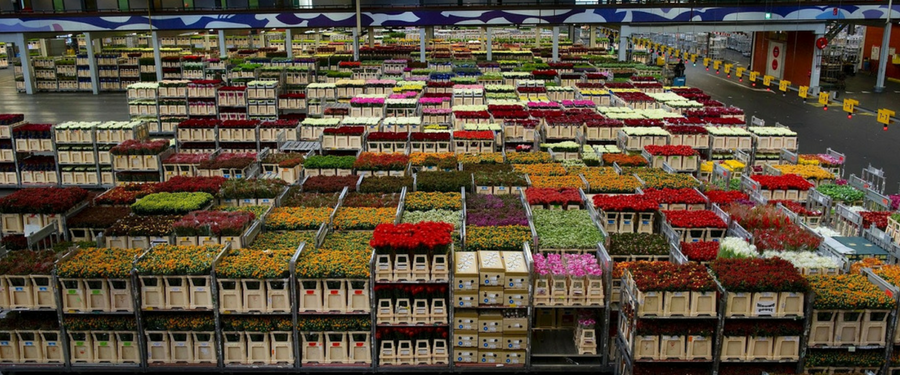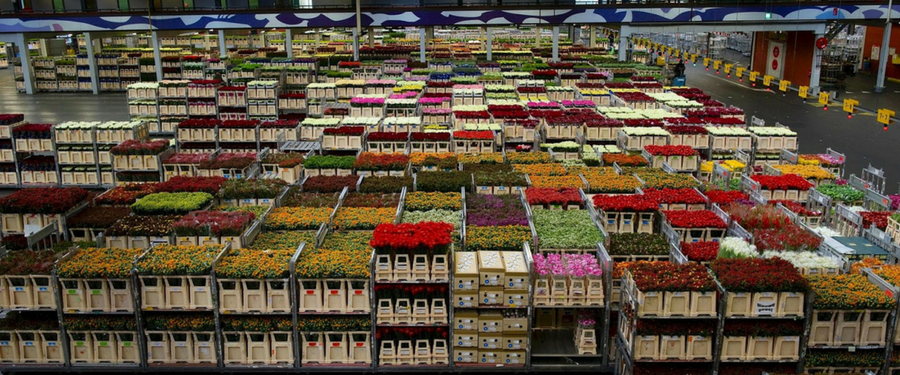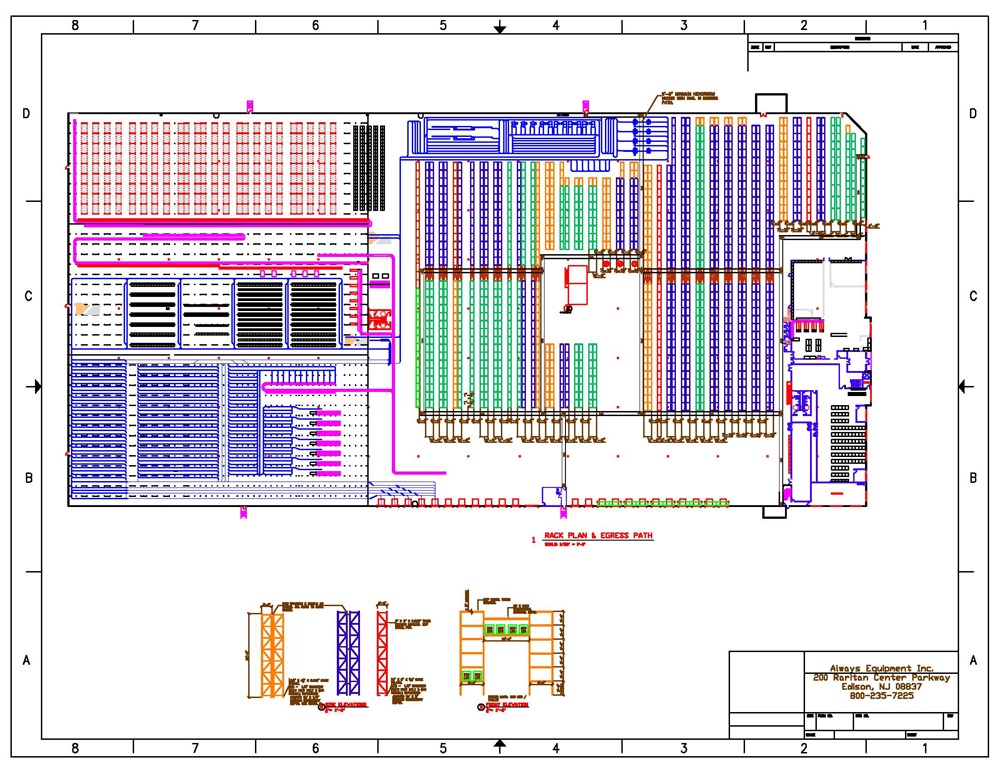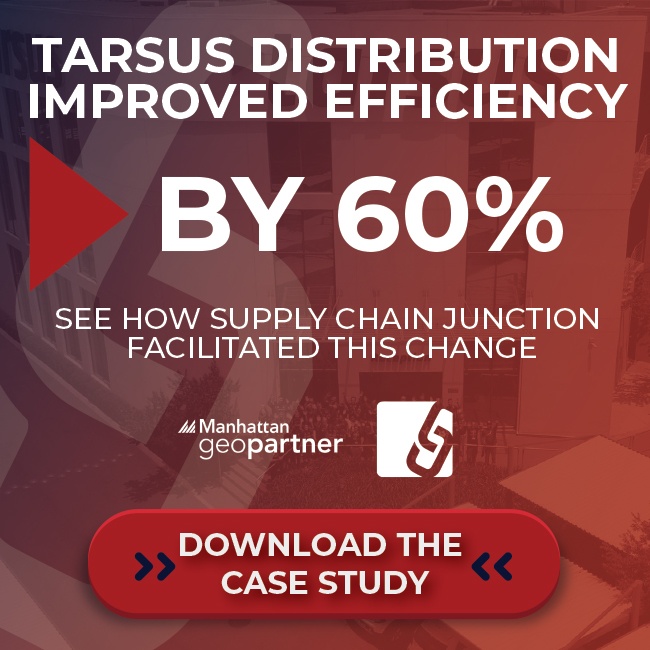Why you should optimise your warehouse layout (and how to do this)


To make sure your warehouse runs successfully, you need a well designed warehouse layout. Find out how your warehouse layout affects your ability to effectively process orders and how you can improve this to streamline your operations.
Whether you’re looking to improve your current warehouse design or are building a brand new warehouse or distribution centre (DC) from scratch, optimising your warehouse layout is vital to the success of your operations.
The benefits of optimising your warehouse layout and design
Optimising your warehouse layout will not only improve your usage of space, but also boost your warehouse productivity and save you money. Needless to say, this ensures that you achieve your business goals and delight your customers with orders that arrive on time, every time.
A fully optimised warehouse design improves the flow of traffic in your warehouse, reduces stock losses and boosts overall efficiency.
The key is to design the flow of inventory, material handling equipment and people to suit the products and volumes that you’ll be moving through your warehouse. The more appropriate the warehouse layout is to cater for these, the smoother your process will be - turning your business into a well-oiled machine.
Warehouse layout design principles: how to optimise your warehouse for maximum efficiency

Image source: Always Equipment Inc
Poor warehouse layout has a negative impact on your bottom line. The good news is that you can easily begin optimising your warehouse design using these simple tips from our supply chain experts.
Collect information and analyse the data
When trying to optimise your warehouse design, data is your best friend. Your data should drive the layout of your warehouse and allow you to identify the stock which is picked most often and group these items in the most efficient manner.
Take a deep dive into your current and projected data on the activities in each area of your warehouse, including:
- Receiving
- Shipping
- Assembly and special handling areas
- Quality inspection
- Reverse storage
- Forward picking
- Cross docking
You’ll also need to look at the inventory you hold and identify things such as seasonal patterns.
How a warehouse management system (WMS) helps you optimise your warehouse layout
A WMS can provide you with the data you need to optimise your warehouse design. Apart from providing crucial data, there are also many other ways your WMS helps you to optimise your warehouse layout more efficiently than if you were trying to do this manually. For example: replenishing a full pallet to a pick face in one movement (rather than case by case) and ensuring that the material handling equipment you have in place is appropriate for the products you’re handling.
Your WMS is a facilitator to a well-designed warehouse.
It can organise, manage and process activities and resources in the warehouse. However, if the physical layout of your warehouse limits the ability of these to be actioned, then you are limiting your ability to optimise the use of your WMS.
Want to see what a world class supply chain looks like in action? Download the Tarsus Distribution case study to see how Tarsus (in partnership with Supply Chain Junction) used Manhattan SCALE to increase their warehouse efficiency by 60%.
To ensure your warehouse consultants consider how the functionality of the WMS can be leveraged to support the design and vise versa, it’s a good idea to include your WMS provider and physical consultants right from the beginning of the project. This will allow you to get the most out of your WMS, MHE and warehouse layout right from the start.
Read our article, How to prepare for a successful warehouse management system implementation, for more tips to help you get the most out of your WMS.
Create a plan for your warehouse design
Using the insights from the data you’ve collected, you’ll need to map out a plan for your warehouse design.
Things to consider when planning your warehouse layout
Design with the end in mind
Whether you’re building a brand new warehouse or upgrading an existing facility you should start by determining and prioritising the objectives for your warehouse facility and operations. It’s also important to clearly identify any constraints that’ll impact your plans to meet those objectives.
Typically a warehouse will have a lifespan of 10 to 15 years, so it’s critical that the design supports the anticipated business growth drivers, and is flexible enough to support the inevitable unexpected business changes that will arise.
Work with an experienced partner
There are literally thousands of options when it comes to warehouse process flow, layout and the material handling equipment required to support them.
Given that the design to build, modify or retrofit your DC is such a critical and costly exercise, it’s prudent to enlist an experienced partner that can guide you through the process.
Optimise the layout of your warehouse and picking strategy
Golden Zoning
Improving the flow of your warehouse by ensuring the most frequently picked items are in the Golden Zone of your warehouse, will reduce travel time between picks and improve ergonomics and efficiency.
- Pick Path - focus heavily on the pick path that will be travelled when orders are being processed, as this will improve productivity and efficiency.
- Replenishment Strategy - ensure that your replenishment strategy aligns to your picking strategy so that pick faces have sufficient inventory to satisfy orders when pickers arrive at them.
- Pick Face UoMs - consider separating storage units of measure (such as pallets and cases) so that they can be picked and stored by the appropriate material handling equipment.
Implement an ongoing optimisation strategy in your warehouse
Making small, incremental improvements to your warehouse layout, based on the data from your warehouse management system, on an ongoing basis will help you ensure that your warehouse running at its peak performance.
Get the Practical Guide to Optimising your Warehouse:
Want to enhance your warehouse processes? Supply Chain Junction offers world class WMS solutions, available in the Middle East and South Africa. Contact us today to discuss your WMS requirements.
TAGS
- WMS (50)
- Warehouse Best Practice (46)
- Implementing a WMS (29)
- Managing your warehouse (19)
- Omni Channel (18)
- eCommerce (18)
- Blog (16)
- Supply Chain Best Practice (16)
- Mid-Level (8)
- Customer Journey (7)
- Warehouse optimisation (7)
- General Tips (5)
- Industry General (5)
- Information (5)
- managing your Supply Chain (5)
- saudi arabia (5)
- Trends (4)
- smart warehouse (4)
- 3PL (3)
- News (3)
- ERP (2)
- Entry-level (2)
- ROI (2)
- Case Study (1)
- OMS (1)
- Picking (1)
- Press Release (1)
- Solution-Specific (1)
- Transport Management System (1)
Take A Look At The Results Of A Successful WMS Implementation.
See how Tarsus Distribution, in collaboration with SCJ boost overall efficiency by 60%



.png?width=65&height=65&name=Untitled%20design%20(39).png)


